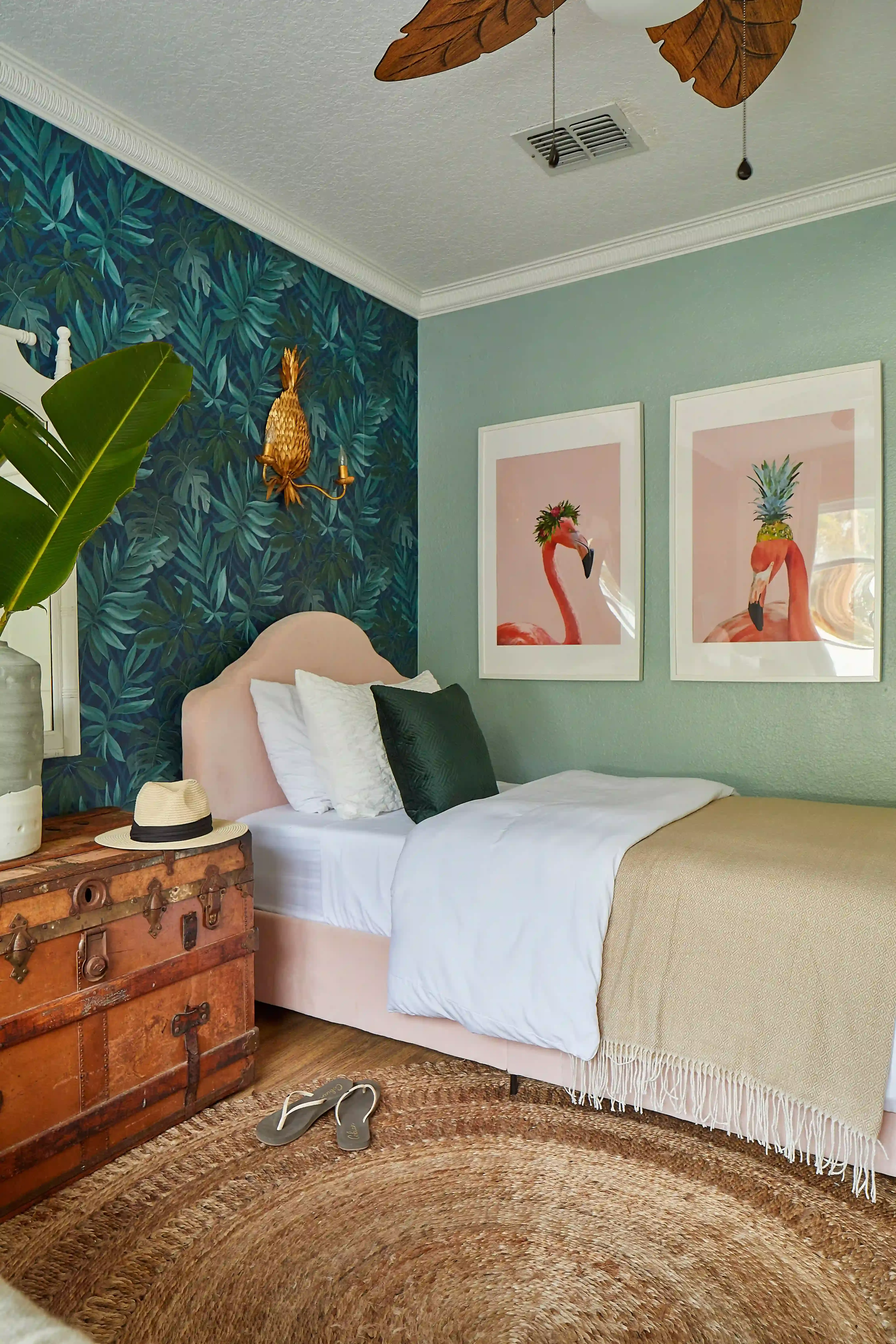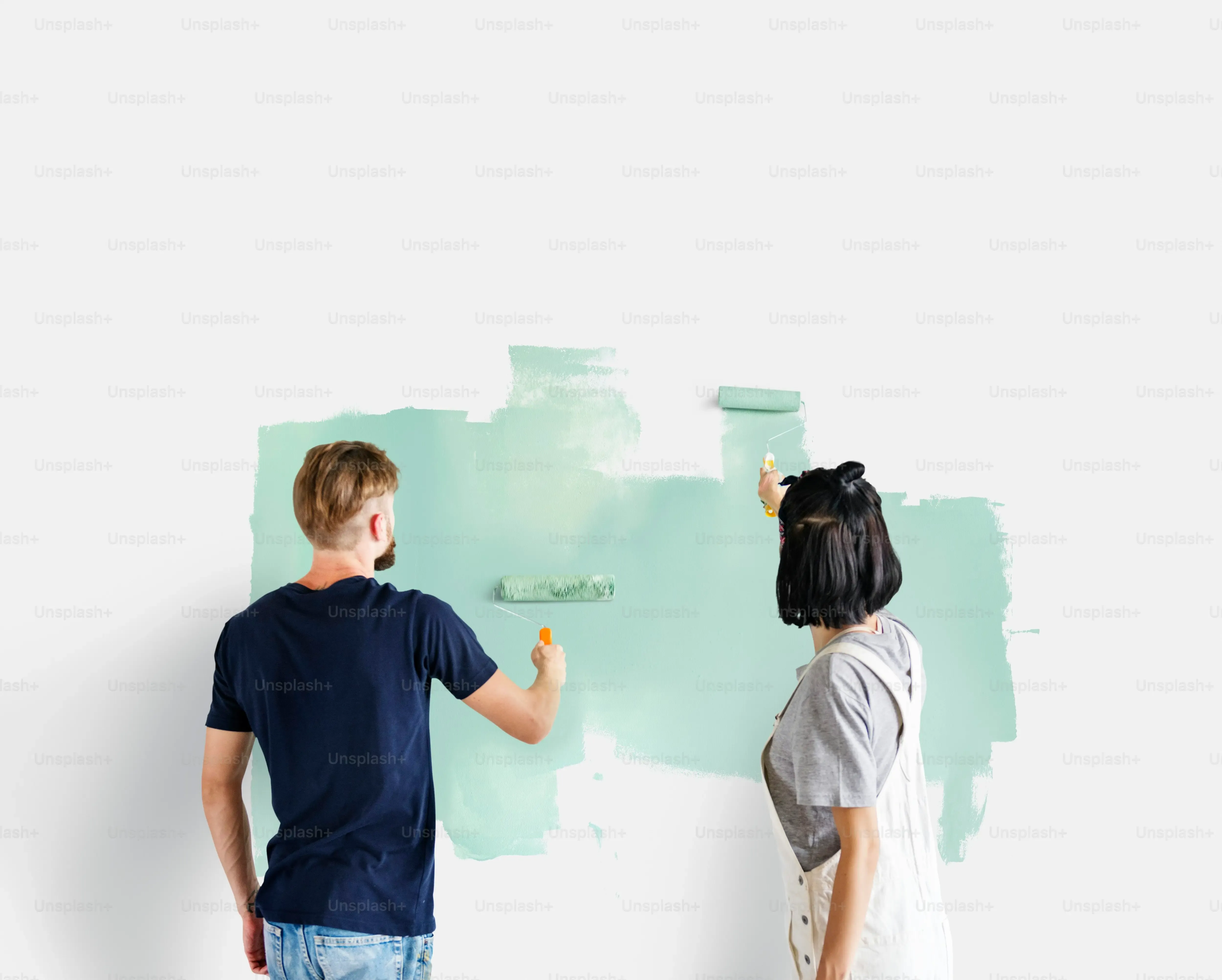Table of Contents
Walk into a room and feel… a bit underwhelmed? Like it’s missing something, a spark, a bit of personality? You’ve got the furniture, maybe some art, but it still feels flat, like a beige postcard. You're not alone. A lot of folks stare at their walls wondering how to inject some life without gutting the place or spending a fortune. That's whereaccent wall ideas paintingcomes in.
Why Paint an Accent Wall? Adding Impact with Color

Why Paint an Accent Wall? Adding Impact with Color
Creating an Instant Focal Point
Ever walk into a room and your eye just doesn't know where to land? It feels... aimless. That's where an accent wall swoops in. It's like giving your room a magnetic pull, a designated star of the show. Painting one wall a bold or contrasting color immediately draws attention to it. This is perfect for highlighting something cool already in the room, like a fireplace you love, a unique piece of art, or even just the wall behind your sofa or bed.
Think of it as curating the view. Instead of looking at four identical walls, you're guiding someone's gaze to a specific spot. It adds intention to your design. Plus, it's a lot less commitment than painting the entire room a wild color you might regret later. It’s a punch of personality without overwhelming the space.
Shifting the Mood and Perception of Space
Color is powerful stuff. It can make you feel calm, energized, cozy, or even a bit edgy. Painting an accent wall is the easiest way to tap into that power without drenching the whole room in one hue. Want your bedroom to feel like a peaceful retreat? A deep blue accent wall behind the bed can create a sense of depth and calm. Need a little energy in your home office? A vibrant, warm color on one wall might do the trick.
Beyond mood, accent walls can play tricks on the eye regarding space. A dark color on the far wall of a long, narrow room can make it feel wider. A strong color on the wall with a window can draw your eye outside, connecting the interior to the exterior. It's a clever way to manipulate how a room feels and functions, all with a can of paint.
So, why bother with just one wall?
- Creates a clear focal point.
- Adds drama and visual interest easily.
- Allows bold color choices without commitment.
- Influences the room's mood and feel.
- Can subtly alter the perception of space.
Choosing Your Canvas: Selecting the Right Wall for Accent Painting

Choosing Your Canvas: Selecting the Right Wall for Accent Painting
Finding the Room's Natural Star
so you're sold on the idea of an accent wall, maybe playing around with someaccent wall ideas painting. But which wall do you actually paint? Don't just pick one at random because it looks like it needs some love. The best accent walls are usually already doing some work in the room; they have a natural focal point. Think about where your eye goes when you first walk in. Is it the wall with the fireplace? The one behind the main sofa? The wall where you plan to hang that killer piece of art?
That's often your prime candidate. Painting that wall reinforces its importance. It tells everyone, "Look here!" It's not about creating a focal point out of thin air, but rather enhancing the one that's already trying to emerge. Ignoring the natural flow and painting a random wall can feel disconnected, like an afterthought rather than a deliberate design choice.
Considering Layout and Traffic Flow
Beyond the obvious focal point, think about how people move through the room and how the furniture is arranged. You don't necessarily want your accent wall to be the first thing someone bumps into. It should be a backdrop, a stage for the main action happening in front of it. Consider the wall you see most clearly from the room's entrance or from the main seating area.
Avoid walls with too many doors or windows. They break up the color and dilute the impact. A wall that's mostly solid gives the color room to breathe and make a statement. Also, think about the light – does natural light hit this wall? How will that affect the paint color throughout the day? It's a bit like setting the stage for a play; you need the right backdrop for your scene.
So, how do you narrow it down?
- Identify the existing focal point (fireplace, large window, art).
- Consider the wall most visible from the room's entry.
- Look for a wall with minimal interruptions (doors, windows).
- Think about the wall behind major furniture pieces (sofa, bed).
- Assess how light hits the wall at different times.
Highlighting Architectural Features or Furniture
Sometimes the wall itself isn't the star, but what's on or in front of it is. An accent wall can brilliantly frame architectural details like built-in shelves, wainscoting, or even just a really interesting window. Painting the wall behind a bookshelf, for instance, makes the items on the shelves pop and adds depth to the unit. It turns a functional piece into a design moment.
Similarly, painting the wall behind your bed or sofa anchors that furniture piece in the room. It gives it weight and importance. It's like giving your favorite chair a VIP section. This is where youraccent wall ideas paintingreally start to come to life, transforming simple elements into deliberate design statements. It’s about making the ordinary feel special.
Creative Accent Wall Ideas Painting for Every Room

Creative Accent Wall Ideas Painting for Every Room
Living Room & Bedroom Accent Wall Ideas Painting
Alright, let's get into the fun part: actually picturing theseaccent wall ideas paintingin your own place. For living rooms, the wall behind the sofa is the classic move. It grounds the seating area and gives you a backdrop for art or shelves. Think deep, moody blues or greens if you want a cozy, sophisticated vibe. Or maybe a bold terracotta or even black if you're feeling brave – it sounds wild, but a black accent wall can actually make colors and textures in front of it pop like crazy. It’s less 'doom and gloom,' more 'intentional drama.'
In the bedroom, the wall behind the bed is almost always the winner. It creates a headboard effect, making the bed feel like the central focus (which, you know, it is). Soft, muted colors like dusty rose, sage green, or a warm gray can enhance a restful atmosphere. But you could also go dark and dramatic with a charcoal or navy to create a cocoon-like feel. It's about creating a personal sanctuary, so pick a color that makes you feel relaxed and happy when you wake up and see it.
Kitchen & Dining Room Accent Wall Ideas Painting
Who says accent walls are only for lounging spaces? Kitchens and dining rooms offer great opportunities for creativeaccent wall ideas painting. In the dining room, the wall where your buffet or sideboard sits is a prime spot. A rich jewel tone like emerald green or a deep burgundy can make entertaining feel a bit more special and formal. If your dining area is part of an open-plan space, an accent wall can help define the zone without needing actual walls.
For kitchens, painting a single wall or even just the wall behind open shelving can add a surprising amount of character. Since kitchens often have lots of cabinets and tile, a painted accent wall provides a welcome break in texture and color. Consider a vibrant yellow or orange for a jolt of energy, or a crisp white or light gray if your cabinets are already colorful. It’s a chance to add personality in a functional space that might otherwise feel a bit sterile.
Still mulling it over? Here are a few color families and the moods they often inspire:
- Blues: Calm, serene, stable. Good for bedrooms, bathrooms, offices.
- Greens: Natural, refreshing, balanced. Works well in living rooms, dining rooms, kitchens.
- Reds/Oranges: Energetic, warm, stimulating. Best in dining rooms, creative spaces, or for small doses.
- Grays/Blacks: Sophisticated, modern, dramatic. Excellent for bedrooms, living rooms, or highlighting art.
- Yellows: Cheerful, optimistic, attention-grabbing. Use in kitchens, entryways, or smaller spaces for a pop.
Painting Your Accent Wall: Tips for a Sharp Finish
Prep Work is Non-Negotiable
you've got your fantasticaccent wall ideas paintinglocked down, you've picked your wall, you've even wrestled with paint chips and settled on a color. Now comes the part where the rubber meets the road, or rather, the paint meets the wall. Skip the prep work, and you might as well just throw paint at it and hope for the best. Seriously, this is where your sharp lines and smooth finish are born or die. Start by cleaning the wall. Dust, cobwebs, that mystery splatter near the floor – get rid of it. A damp cloth usually does the trick, but make sure it's completely dry before you even think about tape.
Next up: tape. Good quality painter's tape is your best friend here. Run it along the edges where your accent wall meets the ceiling, adjacent walls, baseboards, and door frames. Press it down firmly with a putty knife or even your fingernail to seal the edge. This tiny step stops paint from bleeding under the tape, saving you from those frustrating, wavy lines that scream "amateur hour." Don't cheap out on the tape; your sanity will thank you.
Selecting Your Arsenal: Paint and Tools
Choosing the paint sheen matters just as much as the color for youraccent wall ideas painting. A flat finish hides imperfections well but isn't very durable. Eggshell or satin are popular because they offer a nice balance of washability and a subtle sheen. Semi-gloss or gloss are super durable and reflective, great for high-traffic areas or making a bold statement, but they highlight every single ding and bump on the wall. Pick based on the room's function and the wall's condition.
For tools, you'll need a good quality roller and a brush. A roller with a nap appropriate for your wall texture (shorter for smooth walls, longer for textured) will give you the smoothest coverage. Use the brush for cutting in along the edges where you taped. Load the brush with paint, but don't glob it on. A steady hand and practice help, but even pros get paint on the tape sometimes. The goal is consistent, even coverage.
Quick Checklist for Painting Success:
- Clean the wall thoroughly.
- Use high-quality painter's tape and press edges firmly.
- Choose the right paint sheen for the room and wall.
- Select a roller nap suitable for your wall texture.
- Use a good brush for clean cut-in lines.
- Have a drop cloth or old sheets ready.
The Painting Process and the Big Reveal
tape is down, paint is open, roller and brush are ready. Start by "cutting in" along the taped edges with your brush. Paint a strip about two inches wide. Then, use your roller to fill in the main section of the wall. Work in manageable sections, rolling in a "W" or "M" pattern and then filling it in, overlapping slightly as you go. Don't press too hard; let the roller do the work. This helps avoid streaks and ensures even coverage.
Most colors will need at least two coats, especially if you're going from a light color to a dark one. Let the first coat dry completely according to the paint can instructions before applying the second. Patience is key here. Once your final coat is applied and still slightly wet (check the paint can for the recommended window, usually within an hour or two), carefully pull off the painter's tape at a 45-degree angle. This prevents the paint from drying and potentially peeling with the tape. Stepping back to see your finished accent wall is pretty satisfying – assuming you did the prep work, of course.
Making Your Mark with Paint
So there you have it. Diving intoaccent wall ideas paintingisn't brain surgery, despite what some design gurus might imply. It's a relatively low-risk way to see what a little color can do for a room that feels stuck. You've got the basics: pick a wall that deserves the attention, think about the existing colors and light, and don't be afraid to step away from the beige safety blanket. Whether it's a deep navy behind your bed or a punchy green in the dining room, a painted accent wall is one of the simplest, most effective ways to stop a room from being just another box with furniture in it. It’s your space; make it look like you actually live there.
